Special Visitor,
SpaceX Falcon 9 Rocket Launch
Posted: 28 October 2022
|
Open: Thursday, 27 October 2022, 1700 MST Temperature: 80°F |
Session: 1795 Conditions: Clear, breezy |
Equipment:
12" f/8 LX600 w/StarLock
2" 24mm UWA eyepiece
2" 9mm 100° eyepiece
Camera:
iPhone 13 Pro Max
D850 DSLR
I opened the observatory a little early in anticipation of a special visitor this night. Tim, an Indiana University Astronomy graduate arrived a little before sunset.
1737 MST: sunset.
1742 MST: LX600 ON, StarLock OFF, High Precision OFF.
We viewed the Moon, 102X and 271X. I took this handheld iPhone 13 Pro Max afocal 102X photo of the Moon (using NightCap Camera) to show Tim how easy it was to photo bright objects in the telescope using a smartphone.
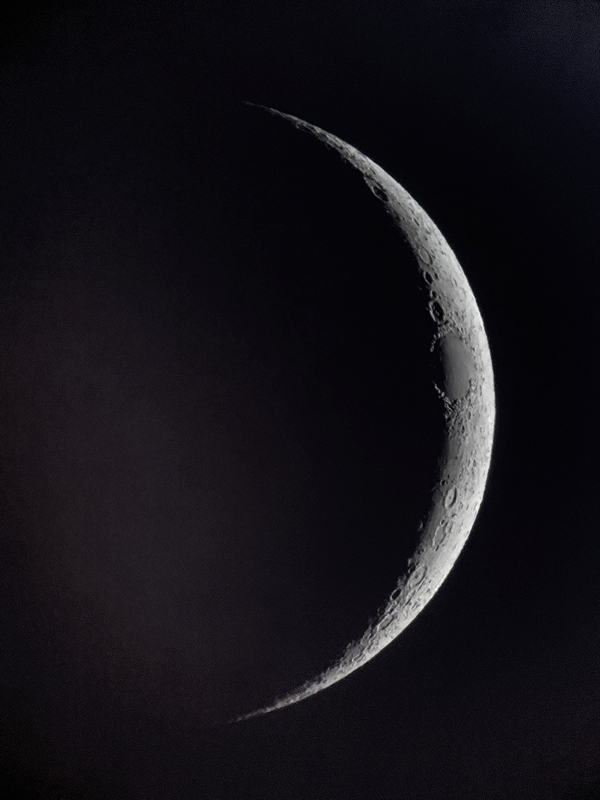
Tim did some handheld Moon imaging with his iPhone.
We then left the observatory to watch the launch of a SpaceX Falcon 9 rocket from Vandenberg Space Force Base in California. The launch was 37 minutes after sunset so conditions were good to view it from Arizona.
These photos were taken with a tripod-mounted D850 DSLR (f/2.8, shutter speeds 1/80sec and 1/40sec, ISO 3200, 24-70mm lens). The first photos were taken at 70mm focal length.
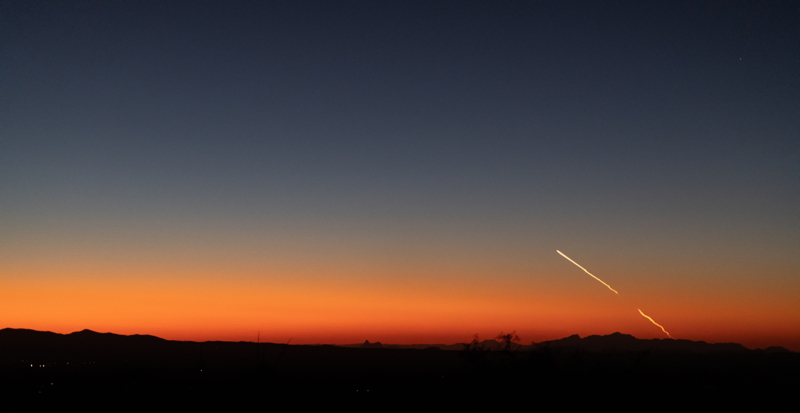

This FL 70mm photo shows the payload fairing halves and the first stage rocket as well as the second stage rocket engine continuing to fire.

Click or tap on image for larger version
These photos were taken at 24mm focal length and nicely show the rocket trail and plume across the western sky. The last two photos show the crescent Moon.
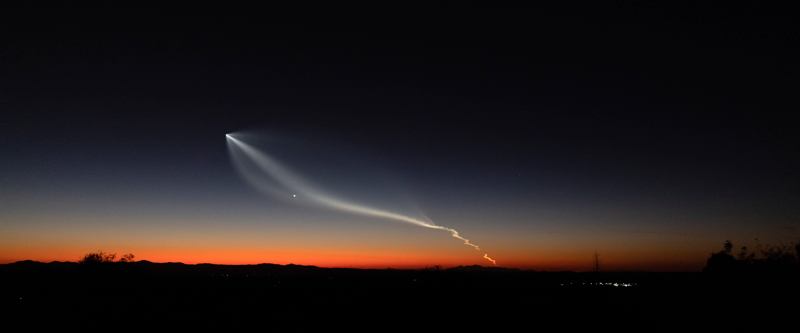
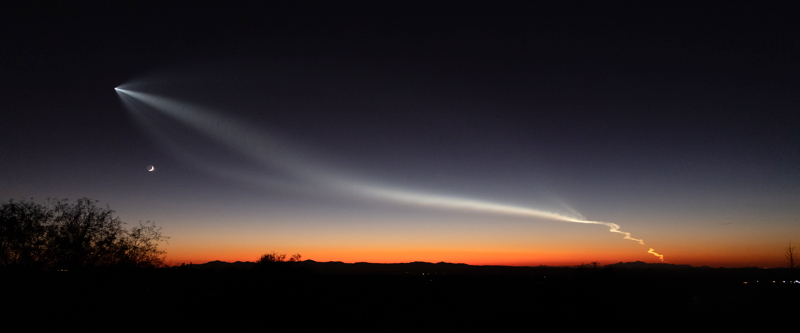
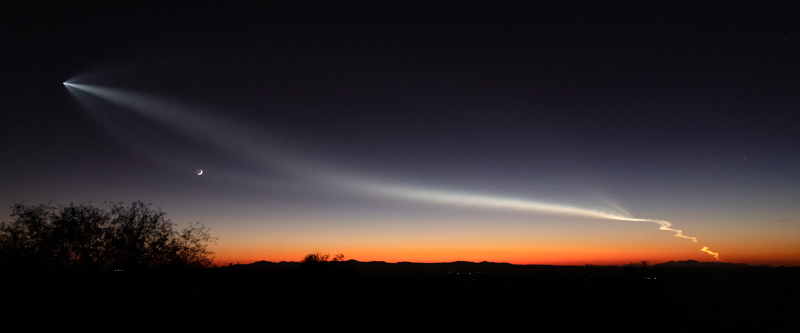
We then returned to the observatory to do some observing using the 12" telescope. We viewed Saturn and Jupiter, 102X and 271X.
We then observed the following deep sky objects, 102X: M17 (Swan Nebula), M8 (Lagoon Nebula), M13 (Great Globular Cluster in Hercules), M57 (Ring Nebula, planetary nebula), the colorful double star Albireo, M31 (Andromeda Galaxy), M32 (satellite galaxy of M31), M110 (another satellite galaxy of M31), M33 (Triangulum Galaxy), Double Cluster (open star clusters), M92 (globular cluster), M56 (globular cluster), M11 (Wild Duck Cluster, open cluster), M16 (Eagle Nebula), and NGC7662 (Blue Snowball Nebula, planetary nebula).
2000 MST: Tim left.
2003 MST: LX600 OFF.
2009 MST: I took a Sky Quality reading.
Thanks to Tim for visiting this night. We had a special night viewing the rocket launch and looking through the 12" telescope.
|
Close: Thursday, 27 October 2022, 2012 MST Temperature: 52°F |
Session Length: 3h 12m Conditions: Clear, SQM 20.87 |
Comments are welcome using Email. Twitter users can use the button below to tweet this report to their followers. Thanks.
Cassiopeia Observatory Home Page
Copyright ©2022 Michael L. Weasner / mweasner@mac.com. Email Etiquette.
URL = http://www.weasner.com/co/Reports/2022/10/28/index.html
